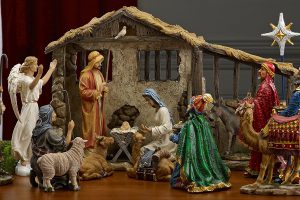
Various cultural institutes are there across the globe. There is a huge network of such institutes. Of course, the same is true in Addis Ababa. The institutes here play a key role in building bridges between Ethiopians and respective countries.
The role of the Italian Cultural Institute resides in introducing Italian culture and arts to Ethiopians. Sharing ideas between people of the two countries is its objective.Pertaining to this issue, Italian Cultural Institute of Addis Ababa Director Francesca Amendola noted Italy and Ethiopia have a longstanding history and bilateral relations. Therefore, this contact helps to improve the cultural development between the two nations.
Bilateral relations between countries lay on various levels of agreements. Four years ago, the protocol of cultural relations cooperation between Ethiopia and Italy had been renewed. And this is an agreement at higher level, Amendola noted. However, to get the ball of the agreement rolling, the cultural institute would strengthen efforts by keeping contacts with various cultural institutes here in the capital and consistently working to organize various programs.
Accordingly, the institute had unveiled various programs to the audiences in Addis. Among these programs is found martyr’s artistic piece of Leonardo Da Vinci that was exhibited at the institute of Ethiopian Studies. “We have been closely working with the institute in promoting art and culture in Ethiopia.” There was also a photography workshop that took on board Ethiopian photographers. The institute had organized a contemporary dance show at the national theatre, where Ethiopian dancers tookpart, she said.
The institute has been endeavoring to discharge its responsibility of cementing the cultural relations between the two nations. “When we talk about culture, sometimes it is about the past or the current and future times. We are working to harness the knowledge, skills and other experiences of the current generation and pass them down to the coming ones.”
According to her, the history between the nations is supportive of the institute’s goals as it allows knowing more cultures of Ethiopians. Even the war incidents helped the peoples of the two countries to know more each other. On the other hand, the age-old relation has also allowed the adoption of some common Italian words in Amharic vocabulary like berenda, pasta, mekanic among others.
There is also knowledge [knowhow] similarity especially in architecture. Ethiopians have great traditional skills especially in stone buildings which has some commonalities with Italians’ skill. Today, Italy is working here in restoring cultural heritages. So Italian architects are participating in renovating the Menilik palace and the Italian companies are also here in the capital dealing to conserve the city’s aged architectural outputs. In relation to this, the institute had recently organized an architectural lecturing program that was held in Dire Dawa focused on conserving architectures, she told.
Ethiopia is in a great moment of development in pursuit of modernity. But it should be cautious in preserving the oldest establishments because it is significant to conserve the oldest identity and facilitate it for tourism. In this regard, the construction and development in Addis should follow this system because Ethiopia must learn from the mess of other countries and bring development while keeping the identity. Italy can also help to this end, she noted.
The institute has faced some challenges in the course of organizing its programs related to absence of audiences [a far cry from the expectation] in spite of the programs’ entrance is fee free. “Addis Ababa is a city of millions of residents so we expect more people [both Ethiopians and Italian expats] to attend our programs. We would like to improve opening our doors wider to audiences through awakening them via posters, social networks and newsletters. We would use also the mainstream media. The programs are more related to culture and artistic pieces that have human interest and even they might have predictable cost if they were organized in Italy.”
In relation to cultural pollution, Amendola said that globalization is a phenomenon no one can halt. Therefore, countries should work to avert at least major negative impacts especially in parrying cultural contamination. According to her, it is all about keeping ideas. “Italians bring their ideas here in a way the scene cannot negatively influence the Ethiopian bases.” She commended the cultural promotion activities undertaken by various cultural institutions including Fendika Cultural Centre. She also called on the audience to attend the precious cultural and artistic programs organized by the institute.

In 11 April 2019 the institute, in collaboration with Institute of Ethiopian Studies, has organized an exhibition that comprised the paintings of Leonardo Da Vinci with a theme of Leonardo Opera Omnia. On the occasion, Ahmed Zekaria, Ethiopian Studies Museum Coordinator said that the gallery is comprised of seventeen best works of Da Vinci. Such a gallery is the first in its kind in Africa. The original paintings are now fading but the copies are vivid and beautiful. They were made 500 years ago. So, the attendees should ask themselves that how this could be done five centuries ago and what they are doing today.
“We should have to try to adopt foreign contemporary art skills to depict our own. Today, these paintings are displayed in various countries across the world. Therefore a person who wants to see the paintings should travel across the countries. However this event helped attendees to observe the paintings under the spotlight of intellectual explanations by saving time, money and energy.” Da Vinci’s works have proximity to Ethiopia as most of the works are loved here. And the paintings including the Last Supper are also drawn by Ethiopians.
Painter Eshetu Tiruneh noted that the Da Vinci works are the contemporary art pieces of the age of renaissance. The renaissance begun in Florence, Italy and took place between 14th to the 17th century. It is just the age when art reborn itself by combining the Greco-Roman wisdom. It was the period when Giotto, Raphael, Angelo, Botticelli and Da Vinci among others unfurled their art talent to the full depicting art pieces bearing philosophical, theological and mythological messages. For instance, Sandro Botticelli’s Aphrodite comprised both mythology and philosophy. On the other hand, most of the then art works intended to humanity. For example, painters like Giotto have painted more on characters grabbed from the Holly Bible and his Lamentation work is among them. The period also brought modern painting styles signifying perspective, composition, and structural paintings, among others.
At the time a book written by Marcus Vitruvius Pollio about the theory of drawing proportion titled De Architectura was found and brought a great change in the art of painting and architecture for the renaissance period that can affect today’s painting reality, he stated. It was the time when circular paintings were begun and human structure was accurately and purposefully sketched. Circle is a symbol of absolutism. Da Vinci applied circular painting in most of his works. Of course, absolutism has proximity to Da Vinci as he is an all-rounded man with the talents of writing, drawing, architecture, mathematics, music and so on.
Among
his paintings only 20 of them are found today. Among his best paintings the
symmetric composition style work of the Last Supper comprised two basic messages in a symbolic and allegoric system. The messages transferred in the Last Supper are promise and disloyalty, Eshetu said. “In this setting, the focal point is Jesus and the 12 apostles in his left and right revealing the moment when he tipped them that one of the apostles will
commit betray. The apostles argue each other that they won’t betray Jesus but Judas Iscariot seen communicating with himself having his moneybag in hand.” Da Vinci’s another work Mona Lisa is a cause of debate among viewers for a long period of time. Her name was taken from the real woman called Madonna. It is a canvas portrait in a pyramidal structure or three dimensional. The triangle shape clearly depicted her calmness. Her major body parts in the painting are her face, bosom and crossed hands. She has no eye brow, this may be it was the fashion to remove eyebrow during the time. It is amazing and unbelievable to know whether she felt depressed, sad or happy, Eshetu noted.
“The interpretation and conservation of such art works obliges us to look into ourselves. We have made various breathtaking art pieces both in paintings and architecture. However, we have no culture to document the knowhow of the structure and implementation how they were made. This is one reason behind our weakness to conserve the rock hewn churches of Lalibela by our own means. Therefore, the presentation of such works helps to dig into the past and find our roots to expand Ethiopian art in various sectors,” he capitalized.
According to him, even the Last Supper and other renaissance paintings were also portrayed in the walls of Lalibela. Eshetu noted that it is essential to discover country’s past history and point out national artistic parameters that could help the generation to understand its root and inspire for more discovery.
Ashenafi Mestica is a private painter and cinematographer. He attended the program. He found the exhibition intriguing and educative for giving details about the art of painting. “Painter Eshetu is also our best painter and he gave us the best explanation interpreting Da Vinci’s art pieces intellectually. He told us about the theory behind the paintings including the art of depicting human proportion in a circular sketch.” Ashenafi called on the organizers to facilitate additional programs.
Berhanu Tamirat is an invited (art lover) guest. He got the paintings very informative. He said the paintings are collective and important to draw experience from the old— the then contemporary art pieces. “I have heard about Mona Lisa in various means especially in the musical works of our artists including Tewodros Kassahun and Tilahun Gessesse. And when I observe the copy of Mona Lisa’s painting, I get amazed as the musicians tried to express her by lyrics but she was beyond words.” However provided the priceless nature of the art pieces the number of attendees is low, he noted.
The attendees agreed on the need to prepare similar programs. The painting and photography exhibitions, the cultural heritages renovation lectures among other programs of the institute would keep on going, according to Amendola. She also called on the public to actively participate in the programs and draw experience from Italy’s artistic and cultural successes and vice versa.
The Ethiopian Herald, June 2/2019
BY YOHANES JEMANEH





